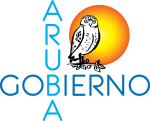Learn more about the sawfish.
ORANJESTAD—The Department of Nature and Environment (DNM) provides information about the endangered sawfish.
Its scientific name is Pristis pectinata. Here on Aruba, it's called sawfish; in Curaçao, it's called pisca di zag; and in English, smalltooth sawfish.
It has a unique head and is identifiable by its long, flat mouth with saw-like teeth along the edge. The sawfish has 22 to 29 teeth on each side of its snout. Its body is shaped like a shark, but it is a type of ray with its gills and mouth located under its body. Its color ranges from gray or olive green to brown on top of the body and white on the underside.
The sawfish species Pristis pectinata belongs to the five different species of sawfish. All sawfish belong to a group of fish called cartilaginous fish, which also includes suckerfish and sharks. Elasmobranchs have no bones, and their skeleton is of cartilage, a strong but more flexible tissue than bone.
The sawfish primarily eats fish, but also invertebrates such as crabs and shrimp. It uses electrosensory systems to detect nearby prey. They live in tropical seas or in areas where rivers flow into the Atlantic Ocean. They are comfortable in shallow water and sometimes enter freshwater areas of rivers. The sawfish can reach a total length of 7.6 meters, but the largest recorded length is 5.5 meters with a weight of 350 kilograms.
A female can give birth to 7 to 14 young; these are born with a fully formed saw snout. The sawfish's gestation period lasts 12 months, and it gives birth every two years.
Here on Aruba, you can find them traditionally in our waters, and some businesses display the sawfish's snout as a triumphal procession. Today, you can find most of this species along the Florida coast. Their threats include habitat loss and unintentional entanglement in nets. Mangroves are a usual habitat, as they use them as breeding grounds for their young. They are also species that return to their breeding grounds. Another threat is that when sawfish become entangled in nets, fishermen kill them instead of releasing them.
The DNM thanks NOAA Fisheries for providing the photo and information. They also thank the Sawfish Conservation Society, which is interested in collaborating with the DNM on educational brochures in Papiamento for our region.
